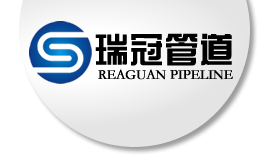Welding method of high pressure boiler pipe
In the welding of alloy pipes of high pressure boiler, the quality of the backing weld is required to be high, which not only requires the weld to be penetrated, the back of the weld to be flat and free of defects, but also requires the back of the weld to be free of slag or less slag, otherwise it will affect the safe operation of the equipment. Therefore, the process of backing, filling and cover welding is adopted.
II. Selection of welding materials
Manual TIG welding wire: ER50-6 welding wire with diameter of φ 2.5mm.
Manual arc welding electrode: R307 (e5515-b2) electrode, with diameter of φ 3.2mm and φ 4mm.
III. preheating before welding
Preheating can slow down the cooling speed of the weld and the heat affected zone, help to avoid the formation of hardened structure, help to escape the hydrogen in the welding zone, and prevent the generation of welding cracks. As the carbon content and alloy element content of 12Cr1MoV steel are relatively high, the preheating temperature is selected as 200 ~ 300 ℃, the preheating area is centered on the weld, and the two sides are at least 100mm. During the whole welding process, the interlayer temperature shall not be lower than the preheating temperature.
IV. welding operation
In the welding of A335 High Pressure Boiler Pipe, not only the welding specification parameters should be strictly controlled, but also the welding operation has a crucial influence on the quality of the joint. The welding procedure is as follows:
A. argon arc welding bottoming: the pipe fittings shall be fixed horizontally, the short arc shall be used during welding, and the welding gun shall be perpendicular to the workpiece surface as far as possible, which is conducive to the protection of argon on the welding pool. The welding gun and welding wire can slightly swing laterally to ensure the penetration of both sides of the groove. At the same time, the temperature of the weld pool should be controlled to prevent weld penetration and weld beading. At the joint, the arc crater shall be polished with an angle grinder, and the welding defects such as arc stopping cracks and air holes at the arc crater shall be removed, and then the arc starting welding shall be continued.
B. short arc welding shall be adopted for arc welding filling, and the heat input shall not be too large. If long arc welding is adopted, problems such as unstable arc combustion, shallow melting depth, large metal spatter and intensified burning loss of alloy elements will occur, as well as defects such as undercut and incomplete penetration. Meanwhile, harmful gases such as N2 and O2 in the air are easy to enter the weld pool and form porosity defects in the weld. During welding, it can be used as a small crescent strip. Stay at both sides of the groove for 0.5 ~ 1s. The welding slag must be thoroughly cleaned between the welding layers. When there are welding defects such as air holes, the welding defects shall be removed with an angle grinder. When the arc is stopped, the crater must be filled to avoid crater cracks. The joints between layers shall be staggered without overlapping.
C. when welding the cover, the welding current should be slightly smaller than the filling, the correct electrode angle should be selected, and the strip should be evenly transported to prevent undercut defects at the edge of the groove. Weld reinforcement shall be controlled at 1-3mm to avoid stress concentration in the use of the joint.
V. post weld heat treatment
After welding, the stress relief heat treatment shall be carried out. After the whole welding joint is heated to 720-760 ℃ and the constant temperature is 1-2h, the welding seam and near seam area shall be covered with heat preservation materials immediately to cool the joint to room temperature slowly. The purpose of heat treatment is to eliminate or reduce the occurrence of hardened structure in the affected area, increase the plasticity and toughness, effectively reduce the welding residual stress, at the same time, it is conducive to the escape of diffusible hydrogen, so as to reduce the tendency of cold crack.
previous_pageSpecification for welding of stainless steel pipe
next_pageDo galvanized steel pipes need to be painted with antirust paint?
